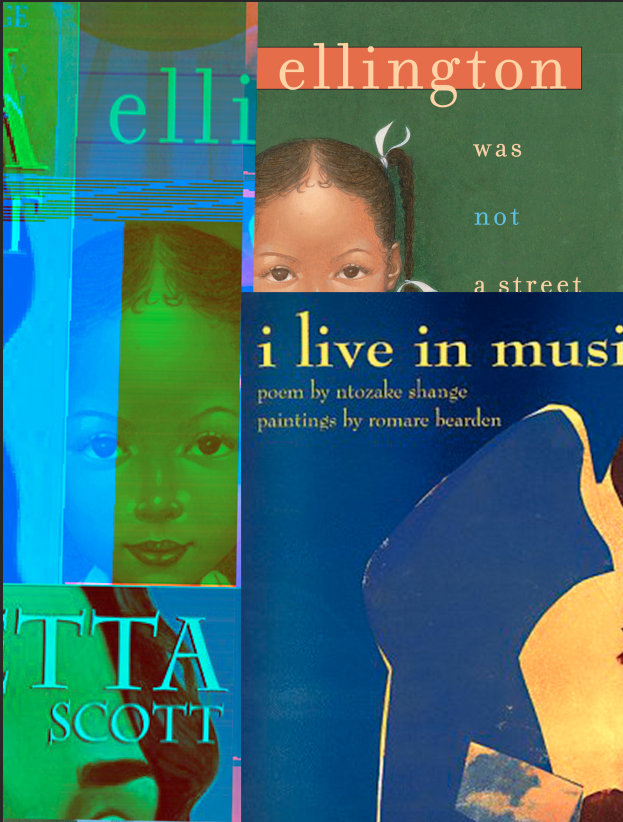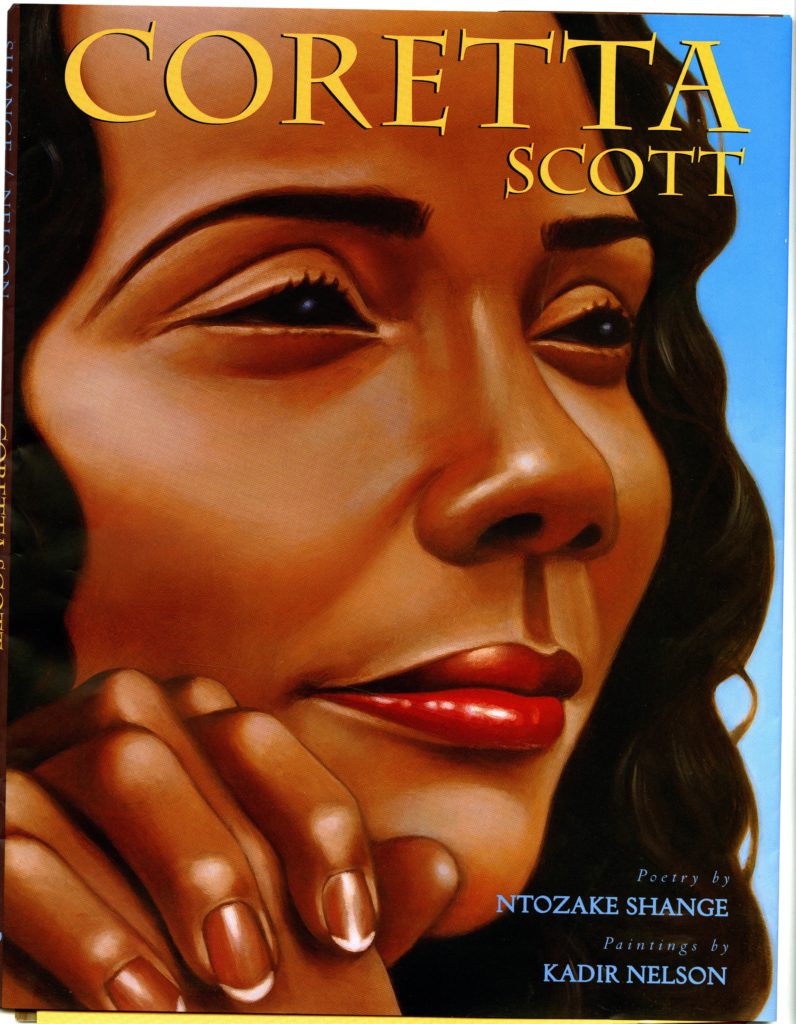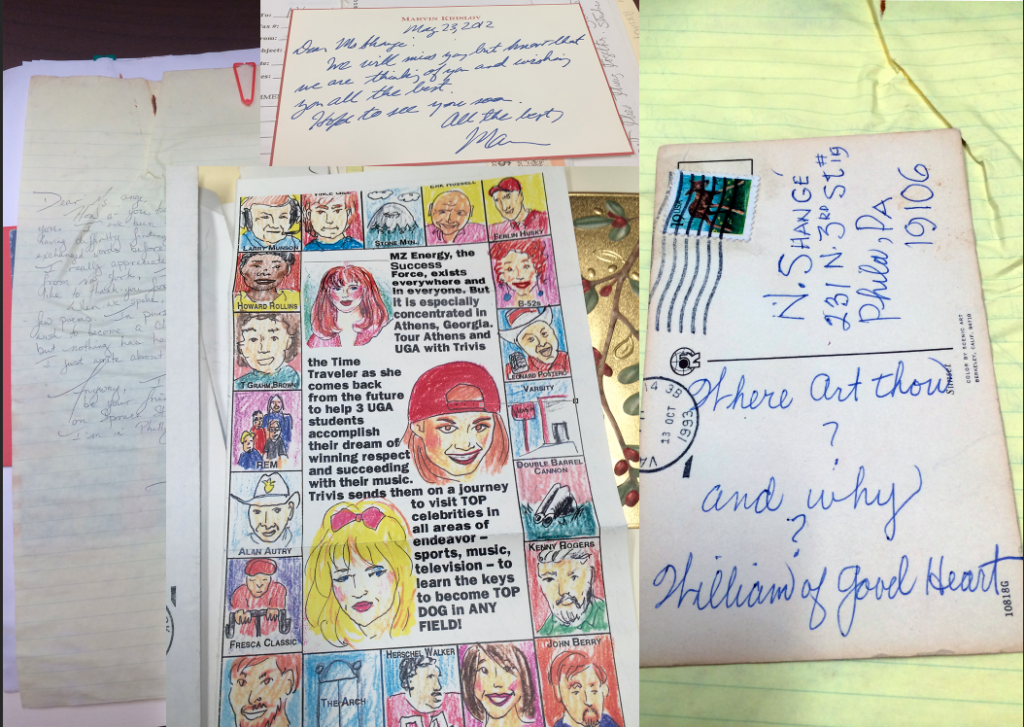AMANDA J. PERRY & GABRIELLE SMITH
Cultural productions that came out of the Black Arts Movement served as tools for conveying histories and traditions of healing, love, and survival. Ntozake Shange recognized the limitations of singular art forms that communicated these traditions and thus, introduced her choreopoem, For Colored Girls, to nuance the collaborative effort. This project seeks to interrogate the process of collaboration by participating in the tradition of pairing multiple artistic forms.
Amanda J. Perry is an artist, healer and writer. A senior at Barnard College, she majors in Africana Studies and minors in Art History. The experiences Amanda has had while engaging with Ntozake Shange’s work throughout her life and especially during her participation in Digital Storytelling & The Worlds of Ntozake Shange, has heightened her interest in intergenerational communication. In recognizing the passing down traditions of healing & love as survival necessity, Amanda has come to understand and hold intergenerational communication as an artfulness and sacred ritual central to her Blackness and girlhood//womanhood.
Gabrielle Smith is an African Studies major at Barnard College and will be graduating this year. She continues to write and perform poetry throughout the city. The love for storytelling brings her to Shange’s work in particular. Her experience in the archive, International Center of Photography and Schomburg are ones that she’s excited to share with you. She hopes to eventually publish her own work and she says Ntozake Shange plays a large role as to why.
My notes from the archive and my poem reflect the same themes. They relate to friendship and yearning. By using the archive as a source of inspiration I’ve also unintentionally allowed the poem to go in a direction that extends the themes that were found. Therefore, the poem isn’t only about a fragmented friendship but also looking toward the future after experiences of hardship and despite loss. That’s why there is imagery relating to reaching toward the hills and the horizon. The archive allows the me to fill in the gaps because that archive doesn’t tell the whole story. Therefore, when an artist is inspired by a piece of work they also bring into their work their own subconscious feelings and emotions, and eventually ends up continuing the story that the archive started/tried to tell. This is one aspect of collaboration; extension.
The archive says one thing and in conjunction with my skills, knowledge, and talent I’m able to push that idea a little further.
I found responding to the painting extremely difficult and it may be because I’m usually a master of words. I instead looked towards the expressions on the images face and colors used in Amanda’s work to as a form of communication in order to pull themes from her artwork. In the end, I can up with the theses of sadness and emptiness. The poem there speaks of a cadaver; an object that is gradually decaying and without flesh or substance. I found myself forming a narrative around the objects in the picture but also being influenced by what I found in the archive during my visit. This process had taught me that it’s hard to escape the ways in which the past has influenced me as an artist; whether the past is the archive visits over the semester or friendships I’ve lost years ago.
Our collaboration required individual archival visits and multiple exchanges of work. For our individual visits, each of us chose material from the archive that elicited our memories and understandings of community, girlhood, healing, and liberation. Following these visits, we took notes that consisted of describing and reflecting on the archival material and the emotions/feelings that it portrayed–these were our first responses. Afterwards, we responded to the material creatively, trying to convey some of the many meanings through our respective art forms–poetry and painting. Next, we exchanged our initial creations to provide inspiration and to facilitate a second cycle of poetic and visual creation. The final step was revisiting the artworks and reflecting on the emotions and meanings conveyed by them. We were fortunate that towards the end of our process, we got to have a conversation with Ntozake Shange about some of her collaborations, the politics of entering and remaining in an (artistic) collaboration, and how we see our exploration of healing and community being in conversation with Shange’s oeuvre. A short edited video can be found is at the end of our portfolio.
Archive Visit by Amanda J. Perry
-
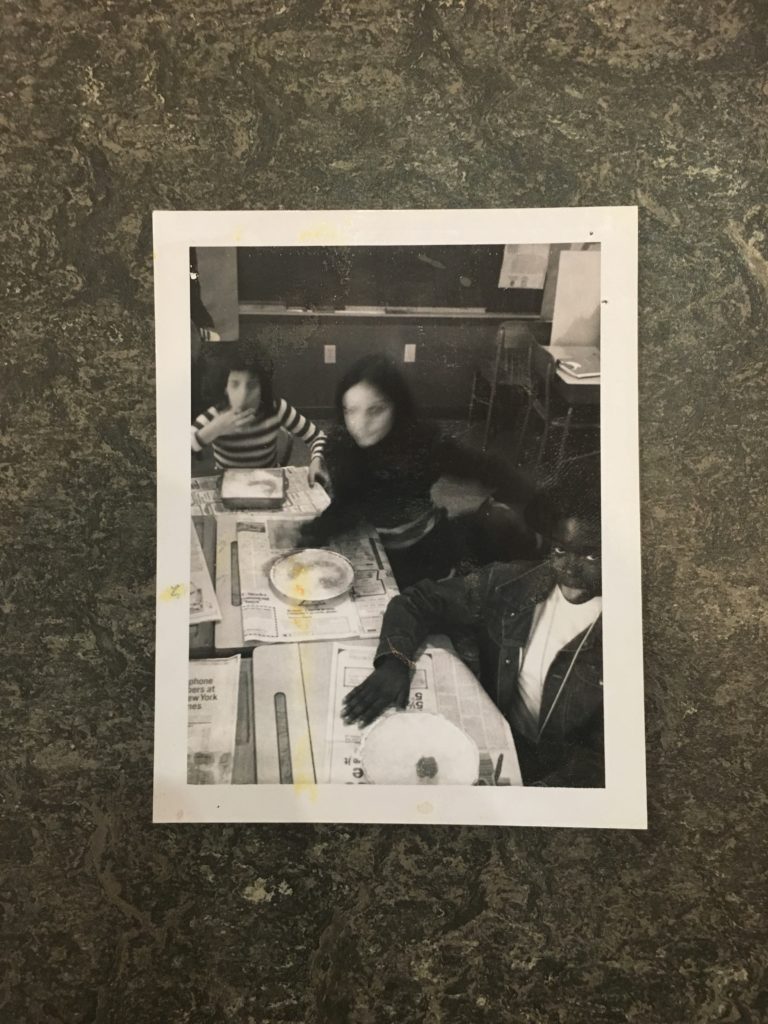
-
Photograph of 3 young students; Sc MG 416- John Steptoe Papers, 1950-1989; Box 2 F.11; John Steptoe Papers, Schomburg Center for Research in Black Culture, The New York Public Library. (Photo by Amanda Perry)
-
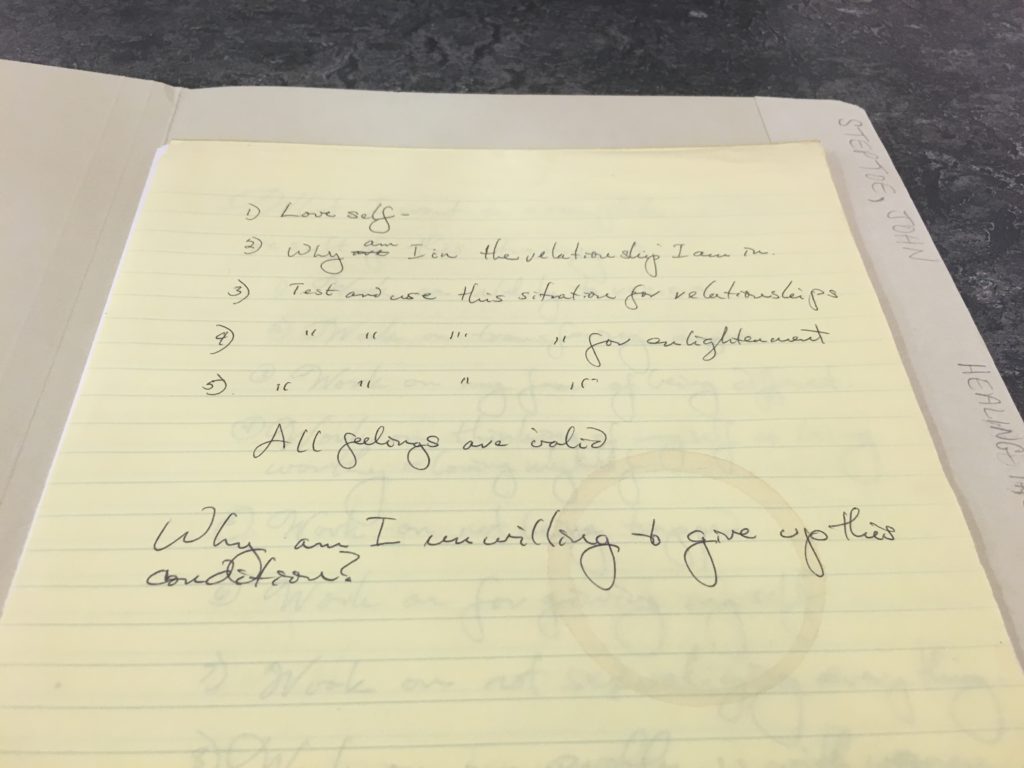
-
Notes from the Healing the Broken Relationships Seminar Training; Sc MG 416- John Steptoe Papers, 1950-1989; Box 2 F.3; John Steptoe Papers, Schomburg Center for Research in Black Culture, The New York Public Library. (Photo by Amanda Perry)
-
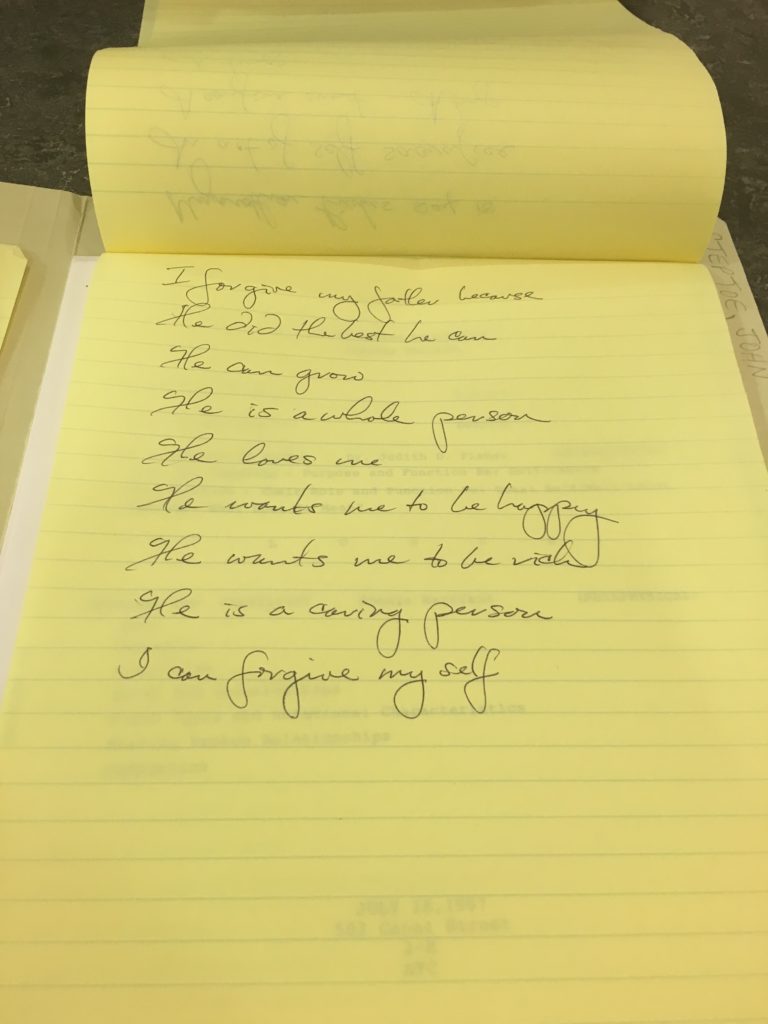
-
Notes from the Healing the Broken Relationships Seminar Training; Sc MG 416- John Steptoe Papers, 1950-1989; Box 2 F.3; John Steptoe Papers, Schomburg Center for Research in Black Culture, The New York Public Library. (Photo by Amanda Perry)
-
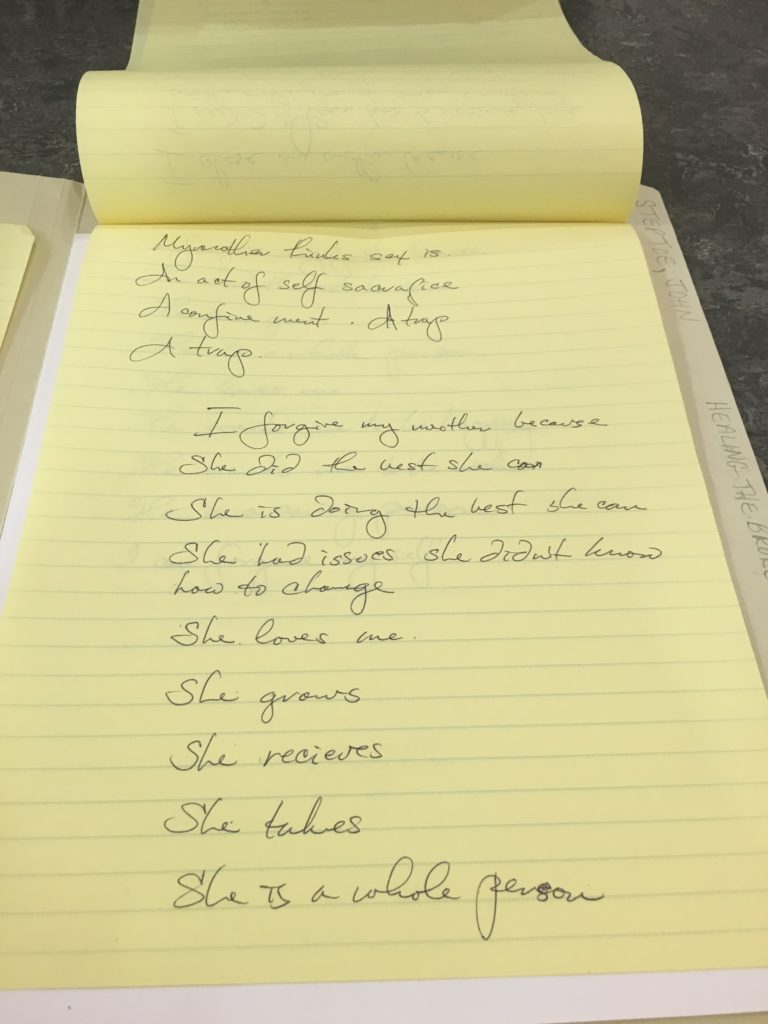
-
Notes from the Healing the Broken Relationships Seminar Training; Sc MG 416- John Steptoe Papers, 1950-1989; Box 2 F.3; John Steptoe Papers, Schomburg Center for Research in Black Culture, The New York Public Library. (Photo by Amanda Perry)
Reflection
Winds blow secrets between clasped hands holding remnants of ancestor’s voice. They go unheard & overshadowed by lonely companionship. Open eyed and blind black girl accepts company in the form of lacerations that turn skin to cage & shackle.
silent. their bones. black. their voices. black. their embrace. unfamiliar. they quiet and they wait. for fear to turn into choice//for black girl lonely to know solitude.
Circles of sorrow form into black girl’s shroud and without call they rise//
Shadows.
whisper
blue
Shadows grow into thousand hands. Lay claim to their girl child.
fold into her ears & stay
and we were girls together by Amanda J. Perry
(a response to archive visit)
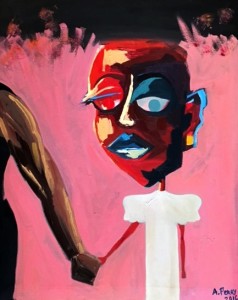
and we were girls together by Amanda J. Perry
Gabrielle’s Poetry Response to “and we were girls together”
Now the Sadness Lives
By now she is a cadaver.
When you make yourself too accessible your only a piece of meat.
Red until the hate turns you blue.
Don’t you wish you would have ate only greens?
Then maybe the grass would have been greener on the inside,
But like a lost sun
without hope
nothing will grow.
Blood..
bind..
Debilitate..
Streams…
Where do you find a man who has the ability to
sonnet the flesh of a woman back to life.
Name him.
A cadaver is simply time wasting away at the seams.
She is not dead.
Death is the purchase of still life.
It’s still
the only thing
we all
can afford.
Archive Visit by Gabrielle Smith
Reflection
Shange/ Cards/ Invitations/ Birthday/ Where art thou? and why? / There are a series of letters to Shange/ One of lost friendships and thank you notes. They tell an interesting story about the relationships that she had with friends and also strangers. “You are so kind. I didn’t expect that from New Yorkers.” Healing/ Thankful/ Who have I sent cards to/ Writing is the labor of love/
Horizon to the Hills by Gabrielle Smith
(a response to archive visit)
Most days I am wild like the grass blowing across the landscape mocking the ocean waves.
I wonder if the ocean ever feels lonely, and waits for someone to beg for it’s song.
I am a horizon.
This friendship is an ocean away,
always reaching but never falling off the edge of the earth.
If the earth had an edge, we would all be able to fly.
Or – so I tell myself.
If you have truly forgotten me and I am a disappearance.
Over and over, you see me again.
I am the crest and then the trough.
This friendship is the frequency
I can no longer abide by.
Does the wave every want to quit?
If it did,
Would the ocean still sing without it?
What is life if not a lesson,
If not everything mocking the ocean…
Learning to crawl again and again
Until you reach the horizon or the hills.
Amanda’s Painted Response to “Horizon to the Hills”
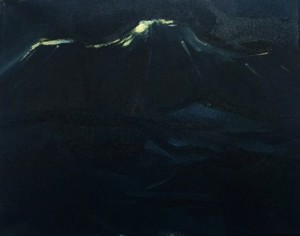
this ocean couldn’t be more kin to me by Amanda J. Perry
